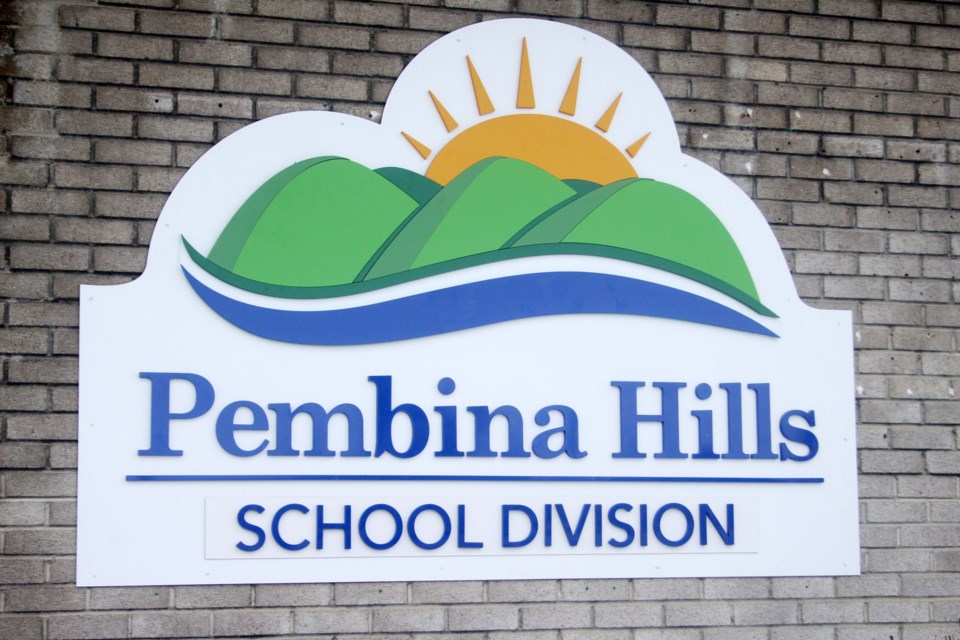The Pembina Hills School Division is also seeing an increase in “aggressive and violent” students, which in some cases require multiple adults to support them.
That was one of the revelations from the annual Student Services Assurance Report presented to Pembina Hills trustees at their Jan. 18 meeting by Rob McGarva, associate Supt. of student services.
“You see the physical and psychological stress that (a violent incident) puts on staff,” he said. “For some people ... it’s a real traumatizing thing.”
He noted he was speaking to an educational assistant (EA) the other day about an incident involving a violent student where she feared she would suffer injury.
And for those not traumatized by some incidents, sometimes they experience what’s known as a “moral injury,” where they feel insulted or that dealing with such incidents isn’t part of their job.
Board chair Judy Lefebvre asked if such complaints were coming more from educational assistants or teachers.
McGarva said it is a little bit of both, clarifying that EAs tend to be more likely to experience trauma while teachers tend to feel moral injury because of the connection they feel with the EA tending to a student.
In one instance, McGarva said an anonymous complaint was lodged with Occupational Health and Safety about student aggression. That incident was investigated and the OH&S people were satisfied with how it was handled, he said.
"It speaks, I think, to how staff feels,” he added.
Continuing a trend from other years, McGarva said they are seeing an increase in students with complex needs.
McGarva said the number of high-needs students dipped down a bit during the pandemic and then “came back with a vengeance.”
Pembina Hills uses a six-tier model called Response to Intervention (RTI) to determine how much support a student requires. Level 1 students need very little to no support, while Level 5 students require a significant amount of adult support and Level 6 students need full-time one-on-one support.
In 2022-2023, 137 students have been identified as Level 5 under the RTI model and 84 are identified as Level 6 students. That’s an increase of 22 and eight per cent respectively from the previous year.
McGarva suggested that students with significant behavioural issues did not benefit from being kept away from a structured school environment for a couple of years.
The report also touched on incidents requiring students to be placed in seclusion, which Pembina Hills is required by the province to track.
There have been 10 instances from September to December this year where students have had to be placed in seclusion, whereas last year there were 14 such incidents in 2021-2022. (Six of those incidents occurred in November 2021.)
“That’s really quite stressful for staff when they have to do that, when they feel it’s gotten to that level,” McGarva said.
Trustee David Truckey asked what the seclusion environment looked like and if these students were being detained.
McGarva said the seclusion room varies from school to school, usually being a space where it’s calm and there isn’t anything nearby that can be damaged or used as a weapon.
He also clarified that it counts as seclusion if the student is in a room by themselves, though in all cases they are still supervised.
“There have been horror stories from other schools when that wasn’t done,” he noted.
He added that there is surveillance occurring in some situations both to protect the students and staff.
In all such cases, there is a plan developed between parents and schools to prevent further incidents. These work sometimes, but other times they’re only effective for a while and then another incident occurs.
Part of the problem is that a lot of the variables that affect a student’s behaviour are not within a school’s ability to control, such as if a child is on new medication or their families have just moved.
Trustee Maureen Schnirer asked how long seclusion might occur. McGarva said the goal is to make the amount of time a student is in seclusion as short as possible.
He noted that they do look at alternative locations outside of classrooms where a particularly problematic student can work.
“The goal is always to be in a classroom with your peers, unless there’s an explanation about why that isn’t working,” he said. “(But) if you’ve had two blow-ups in a day, going back to the classroom is probably not the best place.”



